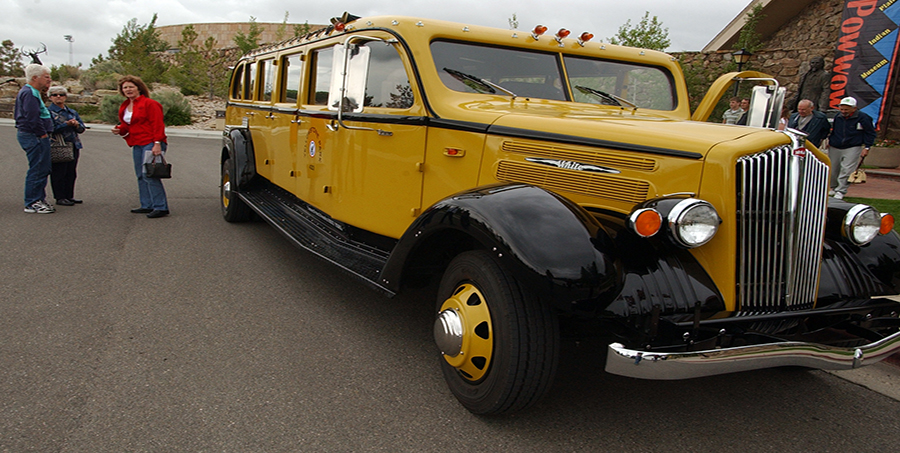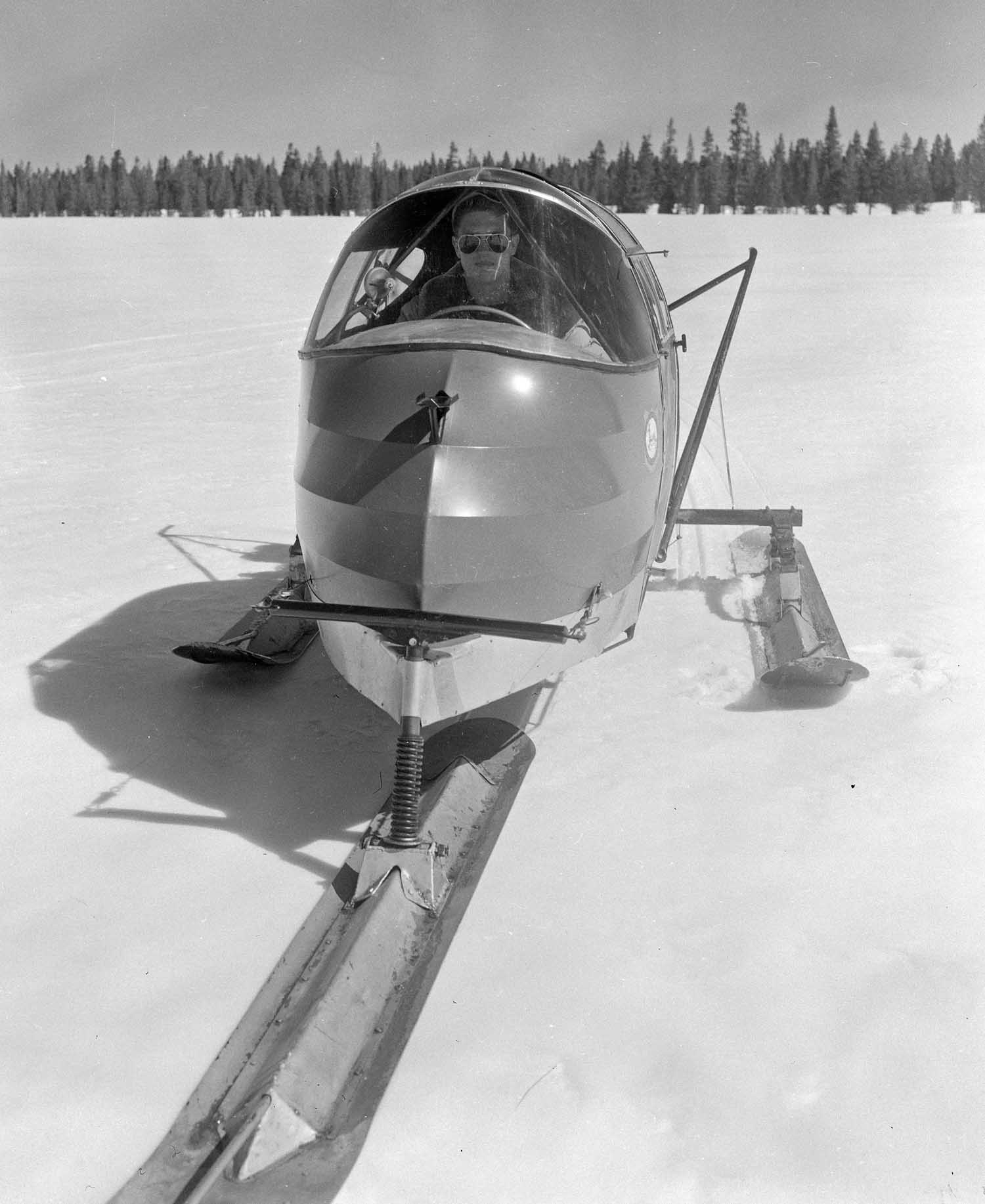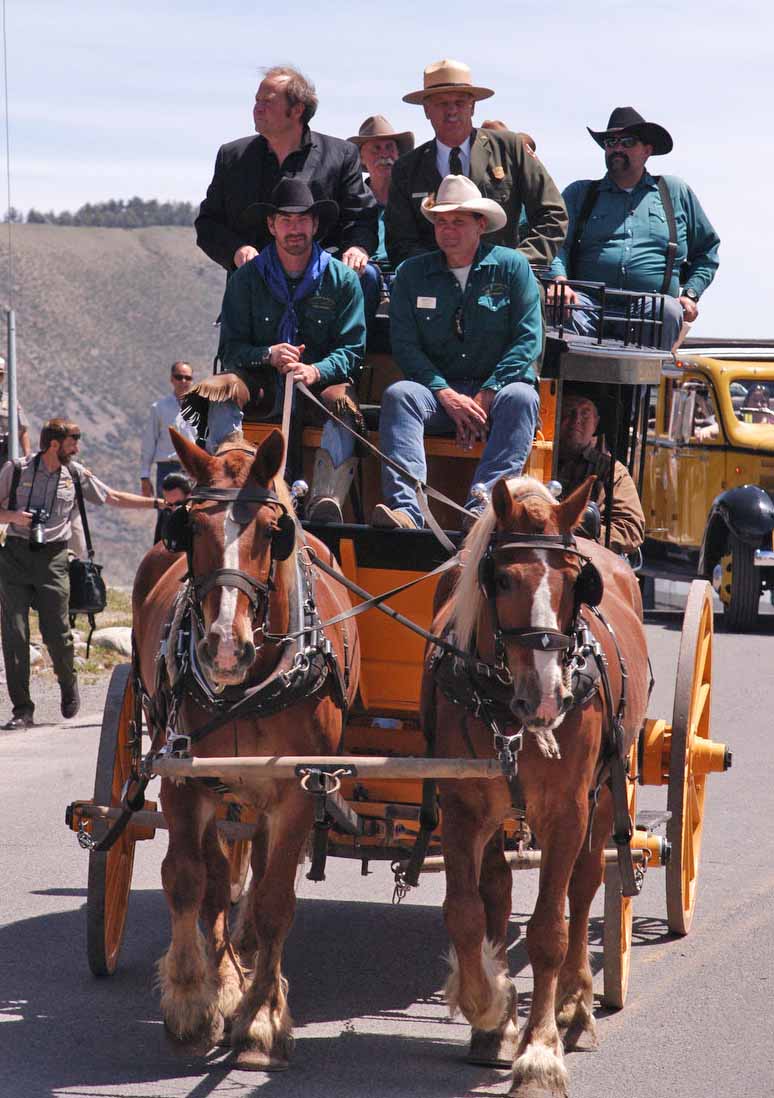
From Staff Reports
For nearly a century, private automobiles have been allowed in Yellowstone National Park. In fact, the first auto trip into Yellowstone—albeit an unauthorized one—took place in 1902 when Henry G. Merry drove his Winton Motor Carriage to Mammoth Hot Springs to a dance at the National Hotel.
But cars are only one of many ways to get around the park, as people have relied on everything from mules to snow planes to move across the more than 300 miles of road that wind through Yellowstone’s 2.2 million acres.
In fact, how visitors have traveled in Yellowstone and other national parks has tended to reflect the culture and technology of the times. The National Park Service’s collection of historic Yellowstone vehicles in Gardiner, Mont. includes 30 vehicles, ranging from stagecoaches to buses to trucks and even a fire engine.
The collection, believed to be one of the largest of any National Park Service Unit, is not available for viewing by the general public, although the Park Service plans to someday exhibit the collection if funding becomes available.
“When you look closely at the many vehicles that have made their way down our roads, you will find that they show not only the technology of the day but also reflect the values and priorities of each generation,” said Rick Hoeninghausen, director of sales and marketing for Xanterra Parks & Resorts in Yellowstone.
“Vehicles range from the funky-looking yellow Bombardier snow coaches still in use today to the drop-belly wagons that were used in early road construction,” he said.
“And without exception,” Hoeninghausen said, “the vehicles offer solid examples of American ingenuity as park managers throughout the generations developed ways to transport guests around our rugged park.”
Among the many vehicles used in Yellowstone through the years are:
Snow planes

Snow planes were first developed in the late 1920s and constructed of a light steel frame with ski runners and pusher propellers. They were used to transport small numbers of winter visitors from the gateway community of West Yellowstone into the park. Developed by West Yellowstone resident Walt Stewart, the snowplanes intrigued two friends who paid him to develop the machines for park excursions. In response to the National Park Service’s interest in the safety of the machines, the three agreed that one machine would never come into the park alone.
One report indicated 35 visitors entered the park in Stewart’s snow planes during the month of January 1949. Snow planes remained the primary means of over-snow travel until 1955, when the first snow coaches entered the park, according to a history of winter use in the park by Michael J. Yochim.
Snow coaches
The brainchild of a young mechanical genius named Joseph-Armand Bombardier, these vehicles look like a cross between a Volkswagen Beetle and a yellow school bus—except for the skis on the front and tank-like tracks where the back wheels should be. Bombardier snow coaches first began transporting the park’s few, hardy winter-season visitors in 1955. Today, primary concessioner Xanterra operates 16 Bombardiers carrying up to 10 passengers each.
Snowmobiles
Bombardier was also one of those responsible for the development of the modern snowmobile. In 1959 he developed an open-cab snow machine for one rider he called a Ski-dog. A typo on a company memo produced the name Ski-Doo instead. Snowmobiles were first permitted into Yellowstone in 1963, according to Yochim.
Stagecoaches

Stagecoaches provide a fine example of the important early association between the concessioner, then called the Yellowstone Park Transportation Company (YPTC), and the Northern Pacific Railroad. The companies developed a stagecoach line in 1884 that first commenced from the Northern Pacific terminal in Cinnabar, Mont., three miles northwest of Gardiner, Mont., and then from Gardiner beginning in 1903. Arriving by train, travelers would embark on a multi-day “Grand Loop” tour of the park aboard these bright yellow, horse-drawn coaches. The largest of these vehicles, six-horse “Tally-Ho” stagecoaches, transported train passengers to the Mammoth Hot Springs Hotel just inside the northern entrance. Smaller four-horse “Observation Wagons” were used for the Grand Loop tour.
Stagecoaches provided tours through the summer season of 1916 and were replaced by buses in 1917. Replicas of the Tally-Ho coaches are used for summer tours today.
Private automobiles
While other national parks began allowing privately operated automobiles into the park as early 1908, Yellowstone did not permit them until 1915. The reason for the delay, at least in part, was because YPTC head Harry Child had deep financial ties to the Yellowstone stagecoach business, as well as many friends in high places. The resistance was also supported, for obvious reasons, by the railroad.
Even after private cars became legal, they were not-so-subtly discouraged. Admission in 1915 for a single-passenger car was $5. Adjusted for inflation, that would amount to almost $115 in 2013 dollars.
Additionally, all cars had to stop at checkpoints with attendants who knew exactly how long it would take to get from point to point while driving the speed limit. If drivers arrived too quickly, they would be given steep fines.
Yellow Buses
Distinctive yellow touring buses built by the White Motor Company were used by summer-season travelers from the 1930s to the 1950s. When private vehicle usage increased to the point where they were not needed, the vehicles were sold and disbursed across the country. In 2007, Xanterra purchased eight of the original vehicles and refurbished them to bring them to acceptable safety and mechanical standards. With seating for 13 people, the vehicles are now used to for a variety of tours during the summer season.
Though a wide range of vehicles powered by draft animals and the internal combustion engine have been used throughout Yellowstone, several kinds of people-powered vehicles have also been used. The park’s historic vehicle collection includes some of them, including firehose carts, handcarts and customized carts known as “Mollys,” used by hotel maids and bellboys.
Contact Yellowstone Gate at 307-213-9818 or [email protected].

Pity, a couple of decades ago, when the lease on the Park buildings reverted to the Park Service that a beautiful and historic tack-room building was demolished at Mammoth.
Too, a mention of the garage the Nichol’s used, right outside the Arch at the north entrance, would have been interesting. They parked their cars there when it was illegal to bring them into the Park. Too bad that beautiful rock, historic building was not acquired by the Park Service, it’s a pizza joint or something else as ignoble the last time I saw it.